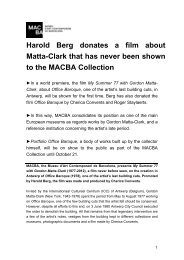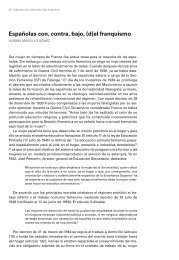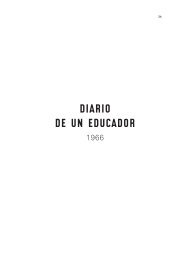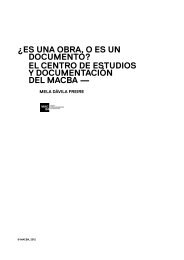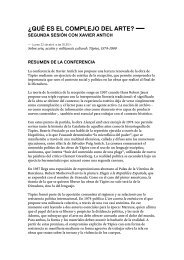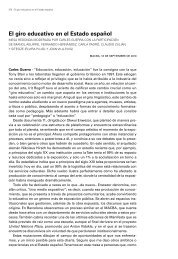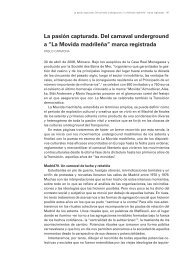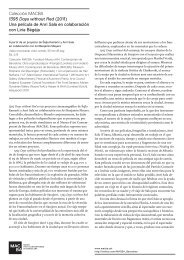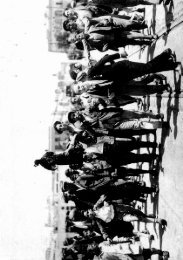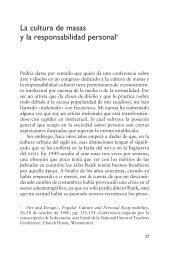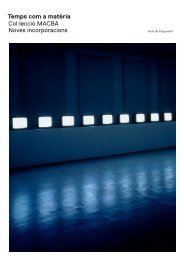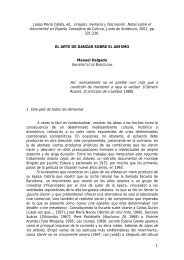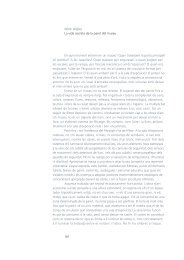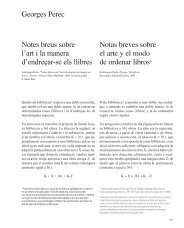Chance, Indeterminacy, Multiplicity - Macba
Chance, Indeterminacy, Multiplicity - Macba
Chance, Indeterminacy, Multiplicity - Macba
You also want an ePaper? Increase the reach of your titles
YUMPU automatically turns print PDFs into web optimized ePapers that Google loves.
21. Kostelanetz, (ed.), Conversing with<br />
Cage p. 219–20. At some point, Cage<br />
came to own one of the more complex<br />
and lesser-known of Duchamp’s chance<br />
compositions, La Mariée mise à nu par<br />
ses célibataires même. Erratum Musical<br />
(1913); provenance given in Anne<br />
D’Harnoncourt and Kynaston McShine,<br />
(eds.), Marcel Duchamp, New York: The<br />
Museum of Modern Art, 1973, p. 264.<br />
22. John Cage, “Composition:<br />
To Describe the Process of Composition<br />
Used in Music of Changes and<br />
Imaginary Landscape No. 4,” Silence,<br />
p. 58.<br />
23. James Pritchett, The Music of John<br />
Cage. Cambridge: Cambridge University<br />
Press, 1993, pp. 78–88; and David W.<br />
Bernstein, “Cage and High Modernism,”<br />
in Nicholls, (ed.), pp. 203–09.<br />
24. See Pritchett, pp. 60–78; and<br />
Bernstein, pp. 193–203. Additional detail<br />
is provided in James Pritchett, “From<br />
Choice to <strong>Chance</strong>: John Cage’s Concerto<br />
for Prepared Piano,” Perspectives of<br />
New Music, Vol. 26, No. 1, Winter 1988,<br />
pp. 50–81; and James Pritchett, “The<br />
Development of <strong>Chance</strong> Techniques in<br />
the Music of John Cage, 1950–1956,”<br />
New York University, Department of<br />
Music, 1988. My thanks to Rebecca Kim<br />
for the last two references.<br />
25. John Cage, Letter to Pierre Boulez,<br />
May 22, 1951, in Nattiez, (ed.), p. 93.<br />
26. Ibid.<br />
soon recognized that his compositions had far surpassed those<br />
of Duchamp in the complexity of the processes used. 21<br />
The intricacy of Cage’s compositional procedures was evident in<br />
Music of Changes. After having decided upon the work’s overall<br />
temporal structure, Cage divided the composition’s remaining elements<br />
into twenty-six charts: eight for sounds (half of each chart<br />
reserved for silence), eight for amplitudes or dynamics, eight for<br />
durations, one for tempi, and one for superposition (“how many<br />
events are happening at once during a given structural space”). 22<br />
Each chart was configured in eight columns and eight rows (those<br />
containing silences or no change in value [e.g., in tempo] generally<br />
not represented) so as to conform to the sixty-four-cell chart of<br />
hexagrams in the I Ching, the Chinese “Book of Changes,” a copy<br />
of which Christian Wolff had given him in late 1950 or early 1951.<br />
Following the I Ching’s method of divining hexagrams by tossing<br />
three coins six times, Cage could locate the corresponding places<br />
on each grid and thereby define the necessary elements for each<br />
and every acoustical event within the final composition. As documented<br />
by the invaluable work of James Pritchett and David<br />
Bernstein, the compositional procedure of Music of Changes was<br />
both time-consuming and labor-intensive, every sound being the<br />
product of consulting multiple charts. 23<br />
Neither Cage’s use of charts nor his employment of the I Ching<br />
began with Music of Changes. Both had been pioneered in the Concerto<br />
for Prepared Piano and Chamber Orchestra (1950–51). 24 In it,<br />
Cage staged an opposition between the piano, which began the<br />
first movement intuitively and improvisationally composed, and<br />
the orchestra. In contrast with the first movement’s piano part,<br />
freely composed in the manner of Cage’s prepared piano works of<br />
the 1940s, the orchestra part derived from a fourteen-column by<br />
sixteen-row chart on which all sonorities were specifically notated.<br />
Each of the sixteen rows was weighted toward a particular instrument:<br />
row 1, flute; row 2, oboe; row 3, clarinet, and so on, down<br />
though the various types of percussion: metal, wood, friction, and<br />
a miscellaneous section that Cage described as “characterized by<br />
mechanical means, e.g., the radio.” 25 The fourteen columns in each<br />
row contained different sounds or sound aggregates, each weighted<br />
according to the instrument dominating the row. Unlike Music<br />
of Changes, each sound within the concerto, no matter how simple<br />
or complex, was invariant and predefined. As Cage explained to<br />
Boulez: “Each sound is minutely described in the chart: e.g. a<br />
particular tone, sul pont on the 2nd string of the first vn. [violin]<br />
with a particular flute tone and, for example a wood block.” 26<br />
215



